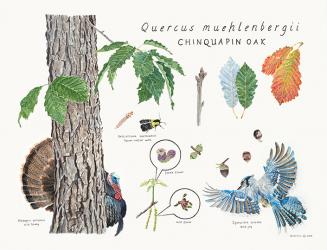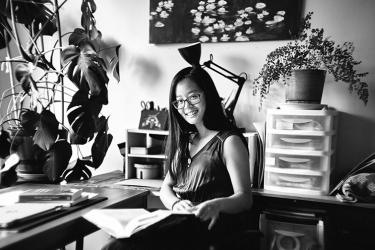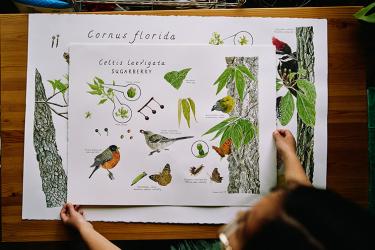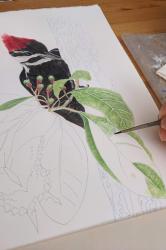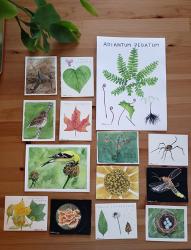Catherine Hu, ecologist and natural science illustrator, didn’t set out to be an artist. “I’ve always enjoyed arts and crafts and being creative, but before painting plants, I never felt super inspired or motivated to do art consistently,” she reveals. Hu works full time as an ecologist, though for years she’s practiced and refined her art, painting for herself or making work she would gift to friends and family.
Then a few years ago, she started documenting her art process and sharing it with others, and fans started taking notice. Hu expertly weaves art and science, blending the two in unexpected ways. “For the most part, I strive for accuracy in my illustrations,” Hu explains, “meaning I paint the plants, animals and fungi with details that make them identifiable. Someone knowledgeable in those subjects should be able to look at them and know what they are.”
In other words, Hu finds art in science. A detailed bird is captured with her art mid flight, its feathers spreading out from its wings as if buffeted by a powerful wind. Or in another one of her works, fern fronds curl and meander across the paper. Much of this fauna and flora hails from the Midwest, where she has done her ecological work in Michigan, Wisconsin, Missouri and Illinois. “It’s always cool to hear about people studying exotic, charismatic species in tropical or faraway places,” she says. “But there’s something fun and special about knowing what lives around your home.”
Hu also finds science in art. “I started painting at the beginning of my conservation career to quickly learn plants,” she explains. “It was a great way to spend time observing leaves, stems, flower parts, colors and shapes, helping me memorize what they look like.” The more time she focused on Midwestern plants and ecosystems, the more she realized the rich relationships between all the living organisms in our back yards. “Any time I walk outside, I don’t just see green,” she says. “I see individual plants and the complicated relationships occurring around them.”
Everything is connected and has adapted to live with each other. “Like ants that disperse seeds or flowers that require bumblebees to vibrate in order to release pollen,” she points out. “There’s a lot of beauty you can see but there’s also so much beauty when you know what goes on beyond the surface.”
When audiences see her work, she hopes they will be inspired to look more closely at the life around them too. “My goal is to show native flora and fauna in a beautiful light and to encourage folks to consider growing native plants in their gardens.” At a time when more focus is paid to the health of the planet, Hu urges people to do the right thing and plant native plants. “They are so important for our native insects, pollinators, birds, and more,” she says. After all, without even the smallest member, how could there be the complete beauty of Midwest nature? Readers can find Hu’s art business online at Sedges Have Edges Art or purchase art through her Etsy shop.


